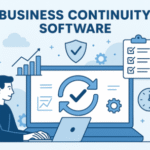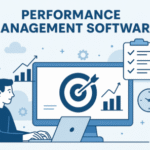Explore ArticleShow
- Introduction
- Understanding Cloud Computing
- Types of Cloud Deployment Models
- Top Cloud Computing Solutions in 2024
- 1. Serverless Computing
- 2. Artificial Intelligence (AI) and Machine Learning (ML)
- 3. Kubernetes and Containerization
- Industry-Specific Cloud Solutions
- 1. Healthcare
- 2. Finance
- 3. Retail
- Security Enhancements in Cloud Computing
- Economic Impact and Cost Efficiency
- Challenges and Considerations
- Future Outlook: Trends Beyond 2024
- Conclusion
Introduction
Cloud computing continues to dominate the technological landscape, offering unparalleled scalability, flexibility, and cost efficiency to businesses of all sizes. As digital transformation accelerates, the demand for innovative cloud solutions grows, with the global cloud market projected to exceed $679 billion in 2024 and surpass $1 trillion by 2027ã€11†source】ã€12†source】. This article explores key cloud computing solutions, emerging trends, and their impact on business operations in 2024, helping organizations navigate the evolving digital ecosystem.
Understanding Cloud Computing
Cloud computing refers to the delivery of computing services—including servers, storage, databases, networking, software, and analytics—over the internet, or “the cloud.” This model offers businesses the flexibility to access resources on demand without the need for extensive physical infrastructure.
Types of Cloud Deployment Models
- Public Cloud: Managed by third-party providers such as Amazon Web Services (AWS), Google Cloud, and Microsoft Azure, public clouds offer high scalability and cost efficiency. These services are accessible to multiple users over the internet, making them ideal for businesses seeking affordable solutionsã€11†source】ã€12†source】.
- Private Cloud: Designed for exclusive use by a single organization, private clouds offer greater control and security, making them suitable for businesses with stringent data privacy requirements. They can be hosted on-premises or by a third-party providerã€11†source】ã€12†source】.
- Hybrid Cloud: Combining public and private cloud environments, hybrid clouds enable businesses to leverage the benefits of both. This model is gaining traction as it offers flexibility, improved data management, and reduced latencyã€11†source】.
- Multicloud: Involving multiple cloud providers, a multicloud strategy helps businesses avoid vendor lock-in and leverage the best features from different providers. According to recent reports, 89% of cloud users are now implementing multicloud strategiesã€12†source】.
Top Cloud Computing Solutions in 2024
1. Serverless Computing
Serverless computing is transforming how applications are developed and deployed. Unlike traditional models, where servers are always running, serverless architectures allocate resources dynamically based on demand, reducing costs significantly. Businesses only pay for actual usage, making this an attractive option for startups and enterprises aiming to minimize operational expensesã€11†source】.
2. Artificial Intelligence (AI) and Machine Learning (ML)
AI and ML continue to revolutionize cloud computing by enhancing automation, data analytics, and predictive modeling. Cloud providers now offer AI-driven services that enable businesses to streamline operations, improve customer experiences, and make data-driven decisions. These technologies are increasingly used in sectors such as healthcare, finance, and retailã€11†source】ã€12†source】.
3. Kubernetes and Containerization
The rise of Kubernetes and containerization is another significant trend in 2024. Kubernetes automates the deployment, scaling, and management of containerized applications, providing businesses with consistent performance across different environments. This technology supports microservices architecture, making it easier to develop, deploy, and manage applications at scaleã€11†source】.
Industry-Specific Cloud Solutions
1. Healthcare
Cloud computing in healthcare enhances data management, patient care, and research capabilities. Cloud solutions facilitate the storage and analysis of vast amounts of medical data, supporting initiatives like telemedicine and AI-driven diagnostics. Enhanced security measures ensure compliance with regulations such as HIPAAã€12†source】.
2. Finance
Financial institutions leverage cloud solutions for improved data security, fraud detection, and real-time transaction processing. AI and ML models help predict market trends, enabling more informed investment decisions. Cloud-based risk management solutions are also becoming increasingly popularã€11†source】.
3. Retail
Retailers use cloud computing to personalize customer experiences, optimize supply chains, and manage large datasets. Cloud solutions enable real-time inventory tracking, AI-driven customer insights, and seamless e-commerce operationsã€11†source】ã€12†source】.
Security Enhancements in Cloud Computing
With cyber threats on the rise, security remains a top priority for cloud providers in 2024. Enhanced encryption methods, multi-factor authentication, and AI-driven threat detection are becoming standard features. Businesses are increasingly adopting comprehensive cloud security frameworks to protect sensitive data and maintain regulatory complianceã€11†source】.
Economic Impact and Cost Efficiency
Cloud computing offers significant cost savings by reducing the need for physical infrastructure and IT personnel. The pay-as-you-go model ensures that businesses only pay for the resources they use, optimizing operational expenses. Additionally, cloud-based AI tools help predict costs and automate resource allocation, further enhancing cost efficiencyã€11†source】ã€12†source】.
Challenges and Considerations
Despite its numerous benefits, cloud computing presents challenges such as data security risks, compliance issues, and potential vendor lock-in. Businesses must carefully evaluate their cloud strategies, considering factors like data sovereignty, integration complexities, and long-term costsã€11†source】.
Future Outlook: Trends Beyond 2024
The future of cloud computing lies in continuous innovation. Emerging technologies like edge computing, quantum computing, and enhanced AI capabilities are expected to redefine the cloud landscape. By 2030, cloud computing will likely be integral to all aspects of digital business, with global spending exceeding $1 trillionã€11†source】ã€12†source】.
Conclusion
Cloud computing in 2024 is characterized by rapid technological advancements, widespread adoption of hybrid and multicloud models, and the integration of AI and ML. By understanding and embracing these trends, businesses can unlock new opportunities, drive innovation, and ensure sustainable growth in the digital era.





